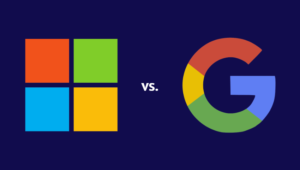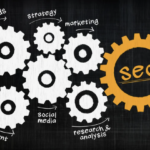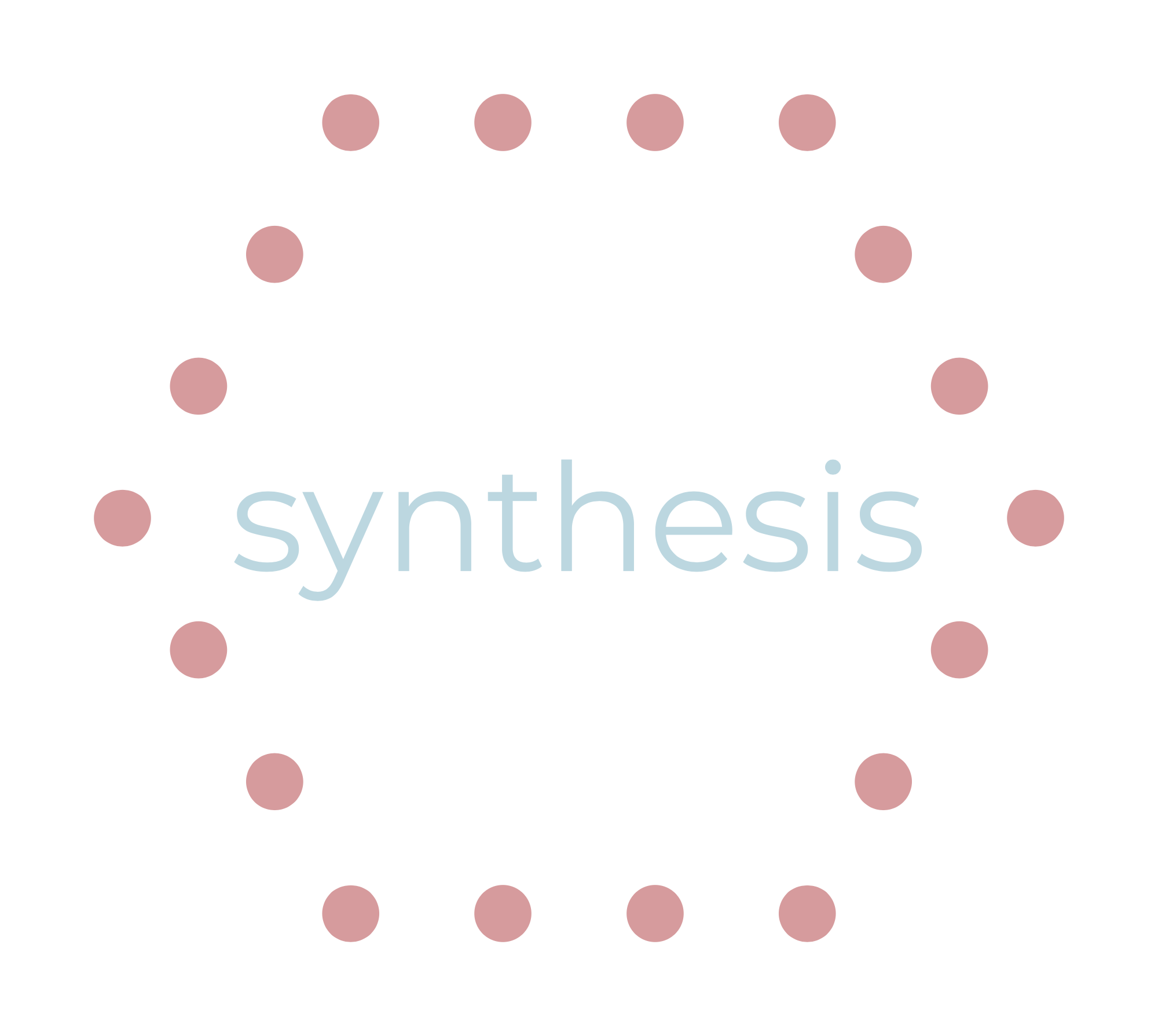When it comes to online advertising, there are two giants that dominate the industry: Microsoft Ads vs. Google Ads. Both platforms offer powerful advertising solutions, but which one is the better choice for your business?
Advertising has evolved significantly in the digital age, and companies now have a wide range of options to promote their products and services online. Microsoft Ads and Google Ads are two of the most popular platforms for businesses looking to expand their reach and drive conversions.
Choosing the right advertising platform can make a huge difference in the success of your marketing campaigns. In this article, we will compare Microsoft Ads vs. Google Ads to help you understand the strengths and weaknesses of each platform, so you can make an informed decision and get the most out of your advertising budget.
Whether you’re a small business owner or a seasoned marketer, this battle of the ad titans will provide valuable insights to help you achieve your advertising goals.
. . .
Contents
. . .
An Overview of Microsoft Ads vs. Google Ads
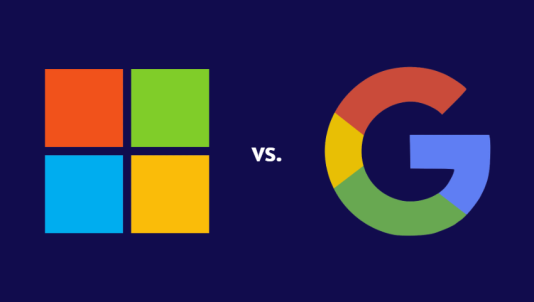
Microsoft Ads, previously known as Bing Ads, is a pay-per-click (PPC) advertising platform owned by Microsoft. It was launched in 2006 and has since evolved to become a significant player in the online advertising space. With Microsoft Ads, businesses can reach a wide audience across the Bing search engine and its partner sites, including Yahoo. Over the years, Microsoft Ads has continually improved its features and functionalities to provide advertisers with a competitive platform for reaching potential customers.
On the other hand, Google Ads, formerly known as Google AdWords, is the leading online advertising platform launched by Google in 2000. It revolutionized how businesses advertise online by introducing a targeted and auction-based advertising model. Google Ads quickly gained popularity and became the go-to platform for advertisers due to its widespread reach through Google’s search engine and partner websites, such as YouTube.
Currently, Google Ads dominates the online advertising market with a significant market share. It reaches billions of users worldwide and offers advertisers an extensive range of targeting options, ad formats, and campaign management tools. Microsoft Ads, although smaller in market share, continues to grow steadily and provides businesses with an additional avenue to reach their target audience. Both platforms play a crucial role in the digital advertising landscape, offering businesses diverse opportunities to connect with potential customers and drive results.
Microsoft Ads vs. Google Ads: Key Similarities & Differences
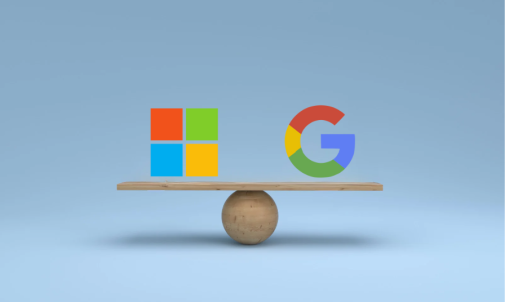
Microsoft Ads vs. Google Ads: Ad Formats & Placement Options
1. Text Ads:
- Similarities:
- Both platforms offer text ads as a fundamental ad format for search engine results.
- Advertisers can create compelling headlines, ad copy, and URLs to attract clicks.
- Differences:
- Microsoft Ads may have a potentially lower level of competition, leading to potentially lower costs per click (CPC) compared to Google Ads.
- Ad placement on the Bing search results page can provide access to a different user demographic.
2. Display Ads:
- Similarities:
- Both platforms support display ads for visual advertising across websites.
- Advertisers can use images, graphics, and rich media to engage audiences.
- Differences:
- Google Ads boasts a larger display network, including the Google Display Network and YouTube, providing broader reach and potential impressions.
- Microsoft Ads’ display ads can reach unique audiences through partnerships with platforms like MSN and Outlook.
3. Shopping Ads:
- Similarities:
- Both platforms allow advertisers to create shopping ads that showcase products and include images, prices, and descriptions.
- Shopping ads are effective for e-commerce businesses aiming to feature specific products.
- Differences:
- Google’s dominance in the e-commerce landscape translates to a wider reach and potentially higher traffic for shopping ads.
- Microsoft Ads’ shopping campaigns might offer less competition, potentially resulting in lower CPCs and costs.
4. Video Ads:
- Similarities:
- Both platforms support video ads, particularly on YouTube and partner websites.
- Advertisers can leverage the power of video to engage users visually and tell compelling stories.
- Differences:
- Google’s YouTube is a significant video platform with extensive reach and engagement opportunities.
- Microsoft Ads’ video ads might tap into unique audiences within the Microsoft ecosystem, offering a different targeting approach.
Microsoft Ads vs. Google Ads: Targeting Capabilities
1. Demographic Targeting:
- Similarities:
- Both platforms allow advertisers to target specific demographics such as age, gender, and other characteristics.
- Precise audience segmentation enhances ad relevance and engagement.
- Differences:
- Google Ads benefits from its vast user data, enabling highly refined demographic targeting.
- Microsoft Ads can leverage its user base, which might differ in demographics from Google’s audience.
2. Geographic Targeting:
- Similarities:
- Both platforms offer options to target audiences based on geographic locations, such as countries, regions, or cities.
- Geographic targeting ensures ads reach relevant local or global audiences.
- Differences:
- Google Ads’ expansive reach and location options might provide more granularity for targeting specific areas.
- Microsoft Ads can effectively target local audiences and provide unique opportunities in specific markets.
3. Behavioral Targeting:
- Similarities:
- Both platforms utilize behavioral targeting to analyze user behavior and interests.
- Behavioral targeting enhances ad personalization and relevance.
- Differences:
- Google Ads benefits from a wide user base, allowing for comprehensive behavioral data analysis.
- Microsoft Ads might offer unique insights based on user behavior within the Microsoft ecosystem.
4. Keyword Targeting:
- Similarities:
- Both platforms use keyword targeting for search ads, enabling advertisers to show ads in response to specific search queries.
- Keyword targeting enhances ad visibility when users search for relevant terms.
- Differences:
- Google Ads’ larger search volume and search dominance might provide a broader keyword reach.
- Microsoft Ads can offer distinct keyword targeting opportunities based on its unique user base.
Microsoft Ads vs. Google Ads: Budgeting & Bidding Strategies
1. Cost-per-Click (CPC):
- Similarities:
- Both platforms utilize CPC bidding, where advertisers pay for clicks on their ads.
- CPC bidding provides control over spending and aligns with performance goals.
- Differences:
- Microsoft Ads may offer potentially lower competition and CPCs compared to Google Ads, especially in certain industries or regions.
- Google Ads’ higher search volume and reach might impact CPC levels.
2. Cost-per-Impression (CPM):
- Similarities:
- Both platforms support CPM bidding, where advertisers pay per 1,000 ad impressions.
- CPM bidding is suitable for brand visibility and awareness campaigns.
- Differences:
- Google Ads’ extensive display network might provide more impressions, contributing to broader brand exposure.
- Microsoft Ads could offer unique audience segments and potentially cost-effective CPMs.
3. Cost-per-Action (CPA):
- Similarities:
- Both platforms focus on CPA bidding, allowing advertisers to optimize for specific conversion actions.
- CPA bidding aligns with campaigns aimed at driving specific user actions, such as sign-ups or purchases.
- Differences:
- Google Ads’ robust user data and machine learning capabilities might offer refined CPA optimization.
- Microsoft Ads can leverage its ecosystem for targeting and potentially unique conversion opportunities.
Microsoft Ads vs. Google Ads: Ad Platform User Interface & Experience
1. Microsoft Ads Interface:
- Similarities:
- Both platforms provide user interfaces for ad campaign management and optimization.
- Advertisers can create and manage campaigns, set budgets, and track performance.
- Differences:
- Microsoft Ads’ interface might be preferred by users familiar with the Microsoft ecosystem, offering familiarity and ease of use.
2. Google Ads Interface:
- Similarities:
- Both platforms offer user-friendly dashboards with campaign management tools.
- Advertisers can access data, set targeting, adjust bids, and monitor results.
- Differences:
- Google Ads’ interface may be more intuitive for users accustomed to Google’s suite of tools and platforms.
Microsoft Ads and Google Ads present a rich tapestry of opportunities. When acknowledging their key similarities and differences, advertisers can craft campaigns that resonate with audiences, leveraging the best of both platforms to create a lasting impact in the digital domain.
Microsoft Ads vs. Google Ads: Performance Comparison
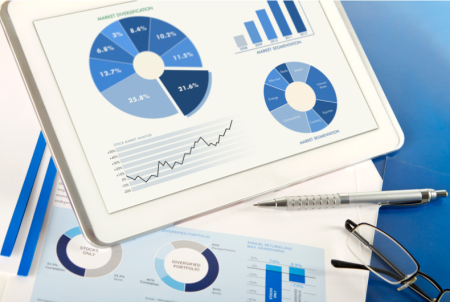
Microsoft Ads vs. Google Ads: Reach & Audience Engagement
When it comes to market share and user base, Microsoft Ads and Google Ads are two dominant players in the online advertising landscape. Google Ads, with its immense popularity and global reach, holds the lion’s share of the market. With billions of searches conducted every day on Google, businesses can tap into a vast audience base and reach potential customers across various industries and regions.
On the other hand, Microsoft Ads, powered by Bing and Yahoo, offers a substantial user base that may provide unique opportunities for businesses to connect with audiences who prefer alternative search engines.
It is important to consider the audience demographics while comparing these platforms. Google Ads tends to have a more diverse user base, spanning different age groups and interests. In contrast, Microsoft Ads attracts a narrower audience, with a higher proportion of users falling in the age bracket of 35-54.
Understanding these differences in audience demographics is crucial for businesses to tailor their advertising strategies and effectively engage with their target customers.
Microsoft Ads vs. Google Ads: Click-Through Rates & Conversion Rates
Click-through rates (CTR) and conversion rates are important metrics to consider when comparing the Microsoft Ads vs. Google Ads platforms.
Each platform differs in how they manage CTRs and conversion rates. Google Ads has historically been known to have higher CTRs compared to Microsoft Ads. This can be attributed to Google’s larger user base and dominance in the search engine market. However, Microsoft Ads should not be underestimated, as it has been steadily gaining momentum and can still generate significant traffic and conversions.
On the other hand, conversion rate performance varies depending on the industry, target audience, and campaign optimization. Both platforms offer comprehensive tools and features to track and optimize conversions.
Advertisers need to carefully analyze their target audience, campaign goals, and budget to determine which platform would best suit their needs and provide the desired results in terms of CTR and conversion rates.
Microsoft Ads vs. Google Ads: Cost-Effectiveness & Return on Investment
When comparing Microsoft Ads and Google Ads in terms of cost-effectiveness and return on investment (ROI), both platforms offer unique advantages.
Google Ads, being the dominant player in the search engine market, has a larger audience reach and can generate a higher volume of traffic. This broader reach can be beneficial for businesses looking to maximize their exposure and attract a large number of potential customers.
On the other hand, Microsoft Ads, while having a smaller audience compared to Google, can offer a more cost-effective solution. The competition on Microsoft Ads is generally lower, resulting in potentially lower cost-per-click rates. This can be advantageous for businesses with limited advertising budgets, allowing them to achieve a higher ROI by reaching a targeted audience at a lower cost.
Ultimately, the choice between Microsoft Ads vs. Google Ads depends on a company’s specific goals, budget, and target audience.
Advantages of Microsoft Ads
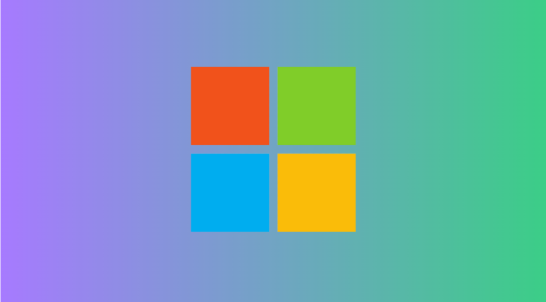
As businesses navigate the digital advertising landscape, the world of Microsoft Ads emerges with its own set of strengths and benefits. These advantages can reshape how you reach your audience online. Let’s delve into what makes Microsoft Ads a distinctive choice for advertisers:
- Potential lower competition and cost per click: Microsoft Ads often presents a more cost-effective advertising option, with potentially lower competition in certain industries, leading to favorable cost-per-click rates.
- Integration with Microsoft ecosystem: Leveraging Microsoft Ads grants access to a broad ecosystem, allowing advertisers to seamlessly connect with users across Windows, Bing, Outlook, and other Microsoft platforms.
- Unique audience segments: Microsoft Ads offers a distinctive user base, reaching individuals who might not frequent other platforms, making it a valuable channel for targeting specific demographics.
- Ad extensions and features: Microsoft Ads boasts a range of ad extensions and features that enable advertisers to enhance their campaigns, provide more information to users, and drive better engagement.
Microsoft Ads brings a toolbox of advantages that can truly make a difference. From potential cost savings and seamless integration to reaching unique audiences and expanding through ad extensions, Microsoft Ads offers a gateway to enhanced engagement. These advantages pave the way for businesses to thrive in the digital advertising arena, capturing attention and achieving meaningful results.
Advantages of Google Ads
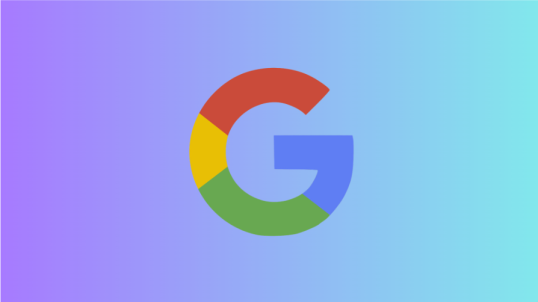
When it comes to digital advertising, Google Ads holds a basket of benefits that can boost your online presence. These perks are like tools that can help your ads reach more people and perform better. Let’s take a closer look at what makes Google Ads stand out in the world of online advertising:
- Wider reach and search dominance: Google Ads’ unparalleled reach spans across the globe, tapping into the world’s most extensive search network, ensuring maximum visibility for advertisers.
- Extensive ad network and partnerships: Google’s vast ad network encompasses a variety of platforms, from YouTube to third-party websites, enabling advertisers to reach audiences through diverse channels.
- Advanced AI and machine learning capabilities: Google Ads leverages cutting-edge AI and machine learning algorithms to optimize campaigns, targeting, and bidding strategies, leading to enhanced performance over time.
- Detailed performance tracking and reporting: Google Ads provides robust tools for tracking and analyzing campaign performance, delivering in-depth insights into ad interactions, conversions, and user behavior, and facilitating informed decision-making.
Google Ads offers many advantages that can really make a difference. With its wide reach, diverse ad network, smart technology, and detailed insights, it’s a powerful tool for businesses looking to make their mark online. Google Ads gives you the tools to shine in the digital world, making your ads more effective and helping you achieve your goals.
Choosing the Right Platform for Your Business

Factors to Consider When Selecting an Ad Platform
When choosing between Microsoft Ads vs. Google Ads, there are several factors you should carefully consider when tailored to your advertising goals. These factors include:
- Business Goals and Target Audience: Understand your business objectives and the characteristics of your target audience. Consider which platform aligns better with your product or service and can effectively reach your desired customer base.
- Competitive Landscape and Industry Trends: Research your industry’s competitive landscape and the prevailing trends. Determine whether Microsoft Ads or Google Ads is more commonly used by your competitors and assess where your audience is most active.
- Reach and Search Dominance: Google Ads has a wider reach due to its dominance in the search engine market. If reaching a broad audience is crucial, Google Ads might be the preferred choice.
- Unique Audience Segments: Consider the uniqueness of each platform’s user base. Microsoft Ads might offer access to an audience that differs from those on Google, which could be advantageous depending on your target demographic.
- Ad Format and Features: Compare the ad formats and features offered by both platforms. Depending on your campaign requirements, one platform might offer more suitable options for showcasing your products or services.
- Advanced AI and Machine Learning: If you’re interested in harnessing the power of AI and machine learning for campaign optimization, Google Ads has a reputation for advanced automation and optimization capabilities.
- Performance Tracking and Reporting: Review the tracking and reporting tools available on each platform. Robust data analytics are essential for assessing campaign performance and making data-driven decisions.
- Geographical and Language Targeting: Depending on your business’s geographical reach and language preferences, one platform might offer more precise targeting options.
- Device Preferences: Consider whether your target audience predominantly uses desktop, mobile, or both. This can influence which platform aligns better with your audience’s behavior.
- Ad Network Diversity: If you’re interested in expanding your advertising beyond search engines, Google Ads provides a wider ad network that includes YouTube, partner websites, and apps.
By carefully evaluating these factors in the context of your business and campaign goals, you can make an informed decision that maximizes the impact of your digital advertising efforts.
A/B Testing & Experimentation
After selecting either Microsoft Ads or Google Ads as your preferred advertising platform, conducting A/B testing and experimentation remains a crucial practice to optimize your campaigns and achieve better results. Here’s how businesses can approach A/B testing on their chosen platform:
- Define Clear Objectives: Set specific goals for your A/B tests. Whether it’s improving click-through rates, conversion rates, or engagement metrics, having clear objectives helps in measuring the effectiveness of changes.
- Identify Key Variables: Determine the variables you want to test. These could include ad copy, keywords, bidding strategies, landing pages, or even audience targeting parameters.
- Create Hypotheses: Formulate hypotheses about how changes will impact your chosen metrics. For example, you might hypothesize that a certain type of ad copy will lead to higher click-through rates.
- Design Structured Tests: Structure your A/B tests by creating two distinct versions: the control (existing) and the variant (with changes). Keep one variable different between the two versions to isolate the impact of the change.
- Segment Your Audience: Divide your target audience into smaller segments. This can help you understand how different segments respond to your changes, enabling you to fine-tune your campaigns accordingly.
- Monitor and Collect Data: Run your campaigns simultaneously and monitor their performance. Collect data on the metrics you’re testing, ensuring you have a sufficient sample size for statistically significant results.
- Analyze Results: Once you’ve gathered enough data, analyze the results to determine which version performed better in terms of your predefined objectives. Statistical significance is essential to ensure that the observed differences are not due to chance.
- Iterate and Optimize: If the variant outperformed the control, consider adopting the changes permanently. If not, analyze why the changes didn’t work as expected and iterate on your hypotheses for further testing.
- Continuously Test and Experiment: A/B testing is an ongoing process. Continue to test new variables and hypotheses to stay ahead of the curve. Once you’ve identified changes that yield positive results, scale them across your campaigns for maximum impact.
- Document Insights: Maintain a record of your A/B testing results, insights gained, and lessons learned. This documentation can guide your future strategies and decision-making.
Whether using Microsoft Ads or Google Ads, the A/B testing approach generally remains the same. However, be mindful of each platform’s unique features and ad formats while conducting tests. Regular experimentation and data-driven decision-making will help you refine your campaigns and achieve better performance over time.
Combining Microsoft Ads & Google Ads for a Comprehensive Strategy
Combining Microsoft Ads and Google Ads can provide businesses with a comprehensive strategy that maximizes their reach and visibility across multiple search engines. While Google Ads may have a larger market share, Microsoft Ads offers unique targeting capabilities and access to a different audience. By utilizing both platforms, businesses can tap into a diverse pool of potential customers.
They can also benefit from the ability to test and compare the performance of their ads on different platforms, allowing them to optimize their campaigns and achieve better results. Additionally, combining Microsoft Ads and Google Ads allows businesses to diversify their online advertising efforts and reduce reliance on a single platform, mitigating the risks associated with changes in algorithms or policies.
Overall, integrating Microsoft Ads and Google Ads into a comprehensive strategy can help businesses maximize their online presence and improve their overall advertising effectiveness.
Future Trends & Outlook

How Microsoft's Integration with OpenAI Has Affected Traffic
Microsoft’s integration with OpenAI has had a significant impact on traffic on search engines like Bing and Google.
With OpenAI’s advanced natural language processing capabilities, Microsoft has been able to enhance the search experience for users by providing more accurate and relevant search results. According to The Motley Fool, “Since Bing already has around 1.1 billion monthly active users, this new integration into ChatGPT could quickly boost its monthly user base by 9%.” This has resulted in an increase in traffic as users are finding the information they need more efficiently.
Additionally, the integration has allowed Microsoft to improve its search algorithms, making Bing a stronger competitor to Google. As a result, more users are turning to Bing as their preferred search engine, leading to an increase in traffic on the platform.
Overall, Microsoft’s integration with OpenAI has positively affected traffic on search engine platforms, providing users with a better search experience and increasing the visibility of Bing in the search engine market.
Predictions for Microsoft & Google in the Ad Space
Businesses looking to use Microsoft Ads and Google Ads can inevitably expect both platforms to continuously evolve in the landscape of digital advertising, presenting opportunities and challenges for advertisers:
Microsoft Ads:
- Ecosystem Integration: Microsoft Ads is likely to continue capitalizing on its integration with the broader Microsoft ecosystem, allowing advertisers to seamlessly target users across Windows, Bing, Outlook, and other Microsoft platforms.
- AI and Automation: Similar to Google Ads, Microsoft Ads will increasingly leverage AI and automation to optimize targeting, bidding, and ad placements. This will result in more efficient campaigns and improved ROI for advertisers.
- Voice Search and Virtual Assistants: With the growing adoption of voice search and virtual assistants, Microsoft Ads might explore innovative ways to engage users through voice-activated ads and search functionalities.
- Audience Personalization: Expect Microsoft Ads to focus on enhancing audience segmentation and personalization capabilities, enabling advertisers to deliver more relevant and targeted messages to users.
- Video Advertising: As video consumption continues to rise, Microsoft Ads might expand its video advertising offerings, providing advertisers with opportunities to engage audiences through video content.
Google Ads:
- AI-Powered Campaigns: Google Ads will further harness its advanced AI and machine learning capabilities to automate campaign management, targeting, and bidding, optimizing performance based on real-time data.
- Privacy and Data Protection: As privacy concerns grow, Google Ads will likely adapt its strategies to ensure compliance with evolving data protection regulations while still delivering effective targeting and measurement.
- Visual and Interactive Ads: Google Ads may explore more interactive and visually appealing ad formats, enhancing user engagement and blurring the lines between advertising and content.
- Augmented Reality (AR) and Virtual Reality (VR): The integration of AR and VR in advertising could become more prominent on Google Ads, allowing advertisers to create immersive experiences for users.
- Local and Hyperlocal Advertising: With the rise of local searches and consumer interest in supporting nearby businesses, Google Ads might focus on refining its local advertising features.
- Sustainability and Ethical Advertising: Businesses are placing increasing importance on ethical and sustainable practices. Google Ads could support campaigns that align with such values, promoting responsible consumption.
- Cross-Platform Measurement: As users engage with content across various devices, Google Ads might enhance its cross-platform measurement tools, providing advertisers with a holistic view of their audience’s journey.
Both Microsoft Ads and Google Ads will likely continue evolving to cater to changing user behaviors, technological advancements, and industry trends. Advertisers should remain agile, adapting their strategies to embrace these trends and maintain a competitive edge in the ever-evolving digital advertising landscape.
The Evolving Rivalry of Microsoft Ads vs. Google Ads
As both giants continually push the boundaries of targeting precision, ad formats, and audience reach, advertisers find themselves at the forefront of a strategic rivalry that reshapes the advertising landscape.
From Google’s dominance in search to Microsoft’s integration with its ecosystem, each platform employs distinctive strengths to capture the attention of advertisers seeking optimal engagement. This ongoing duel drives the evolution of ad technologies, audience insights, and campaign management, enriching the options available to businesses and ensuring a captivating spectacle for industry observers.
. . .
Conclusion
The battle of Microsoft Ads vs. Google Ads is a fierce one, with both platforms offering unique advantages and benefits for businesses. When it comes to choosing the right advertising platform, it’s crucial to make an informed decision based on the specific needs and goals of your business. Consider factors such as target audience, budget, advertising objectives, and available resources.
By carefully evaluating these factors and understanding the strengths and weaknesses of each platform, businesses can make strategic decisions that maximize their advertising efforts, and perhaps leverage the potential of both platforms, to drive desired results. Remember, the success of your advertising campaigns lies in making the right choice that aligns with your business objectives and allows you to reach your target audience effectively.
. . .
If you enjoyed reading content like this, feel free to check out our other blogs on our website. For more information on how to improve your digital advertising strategy, you can reach out to us for a free consultation. We’d love to get you started on your Synthesis Insights journey today!

